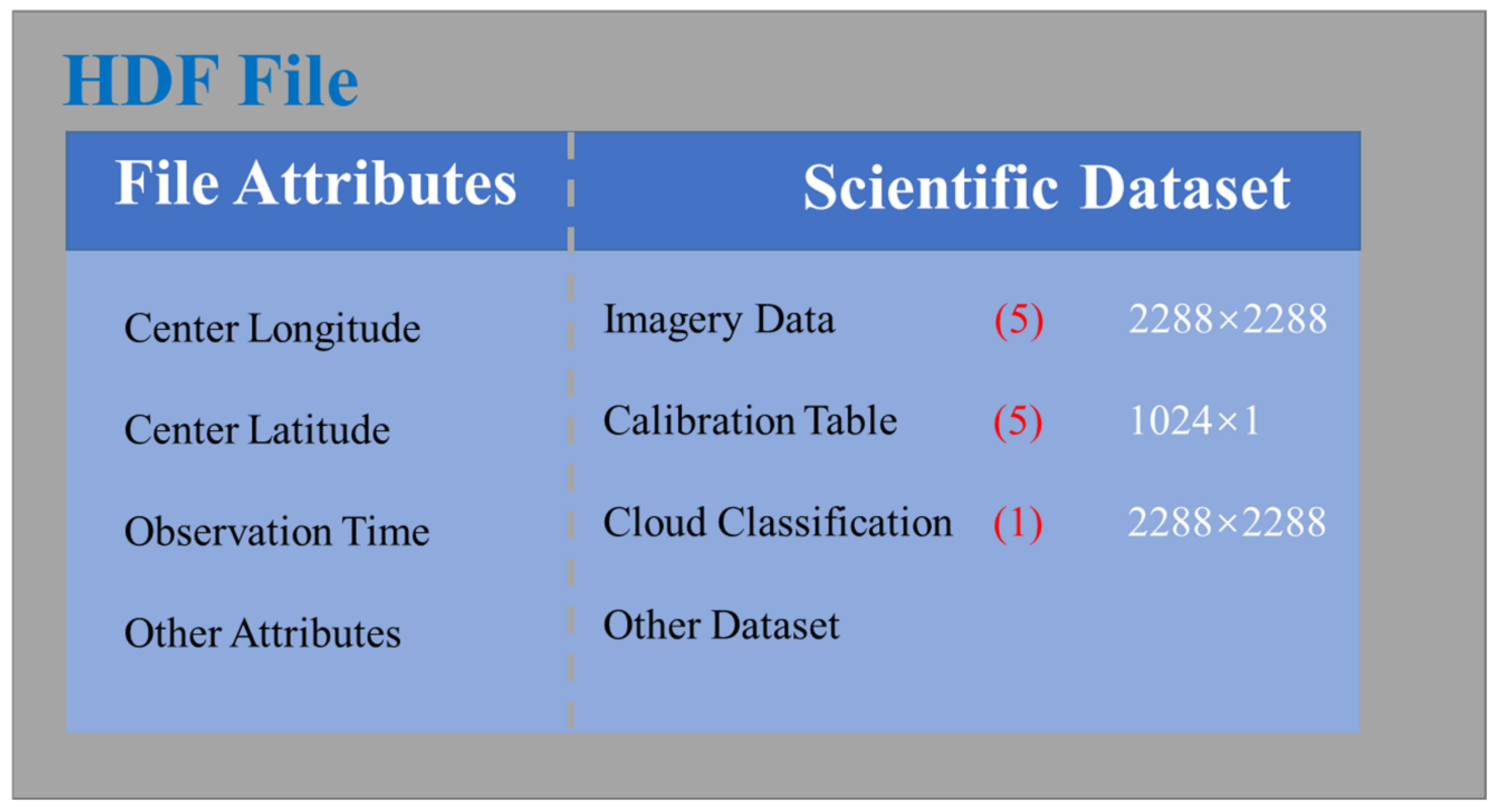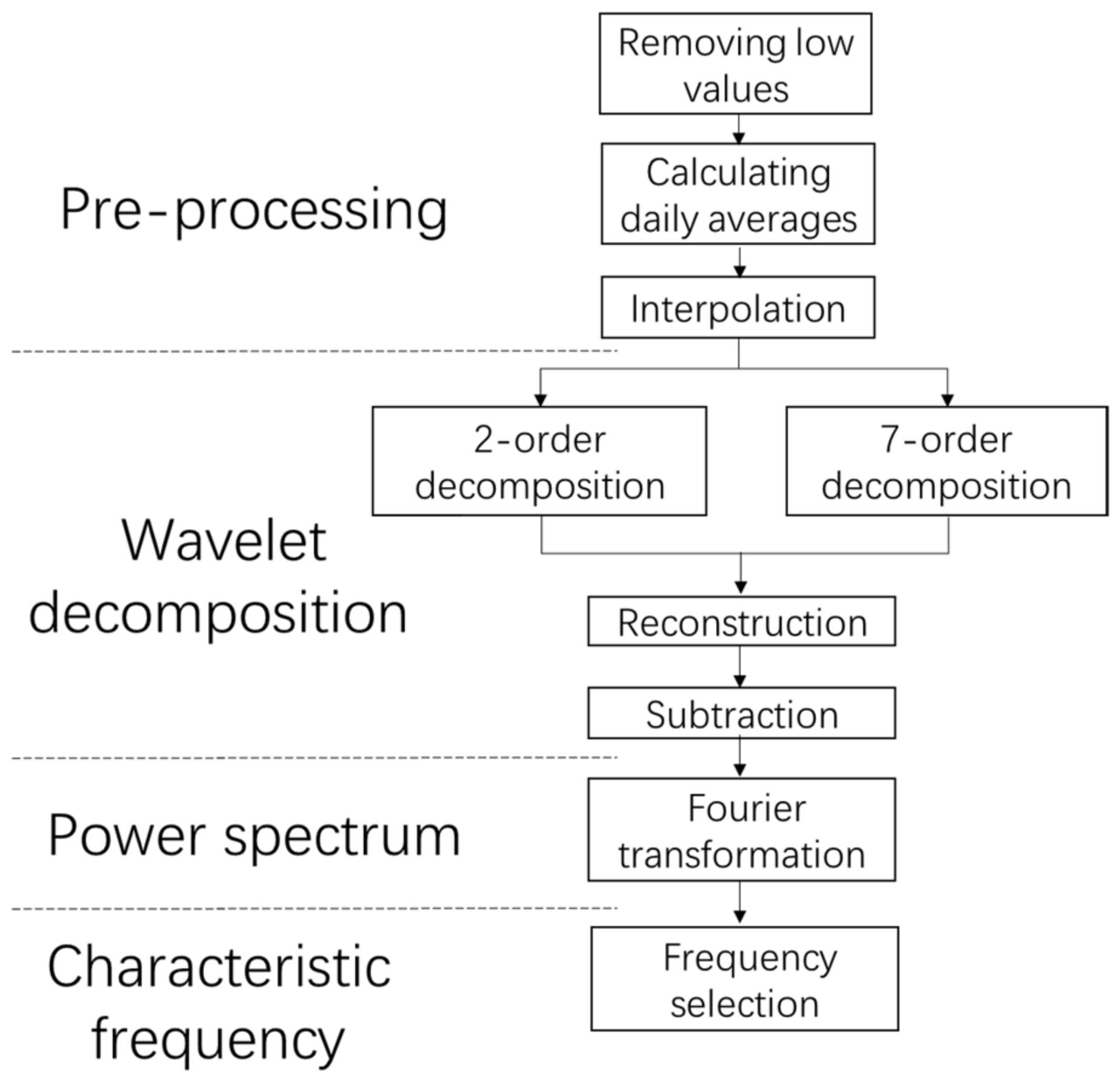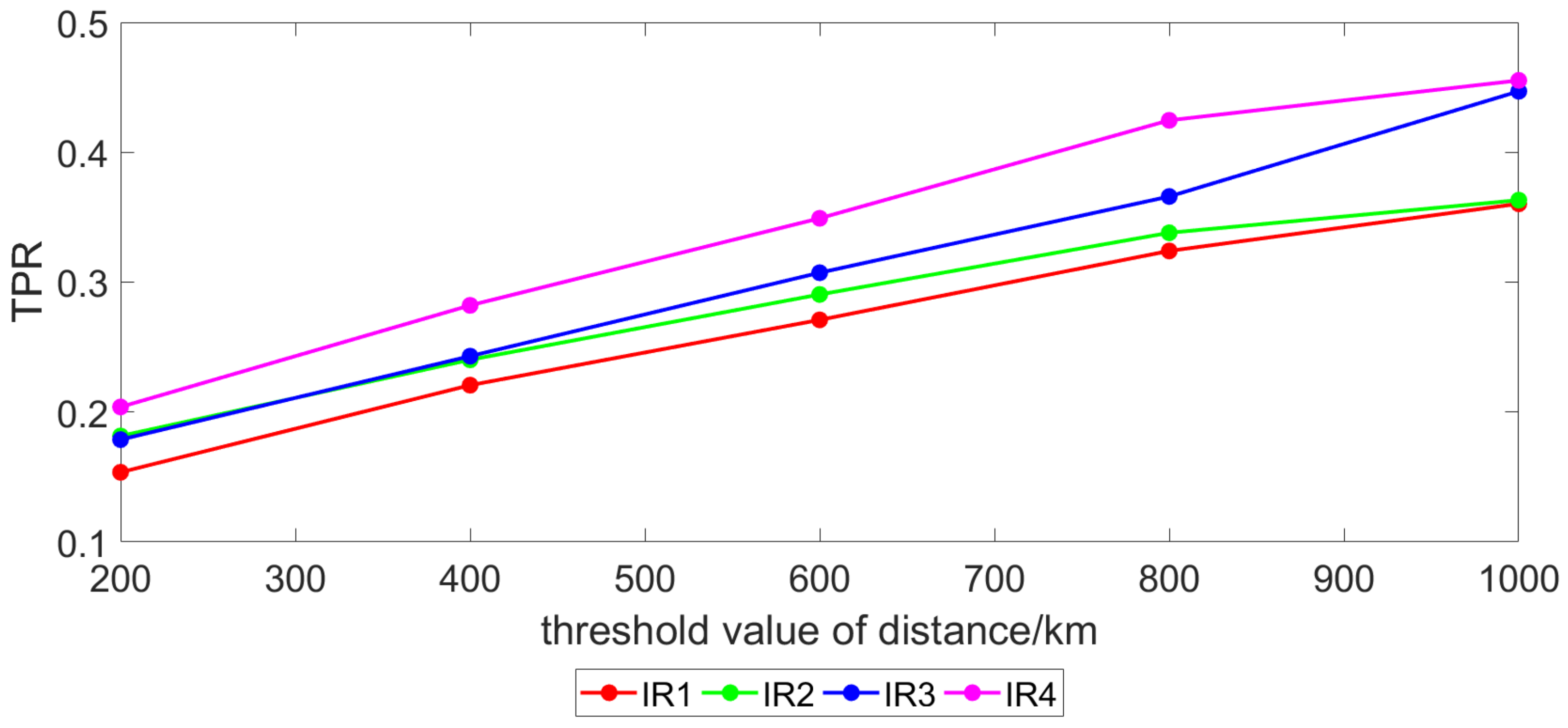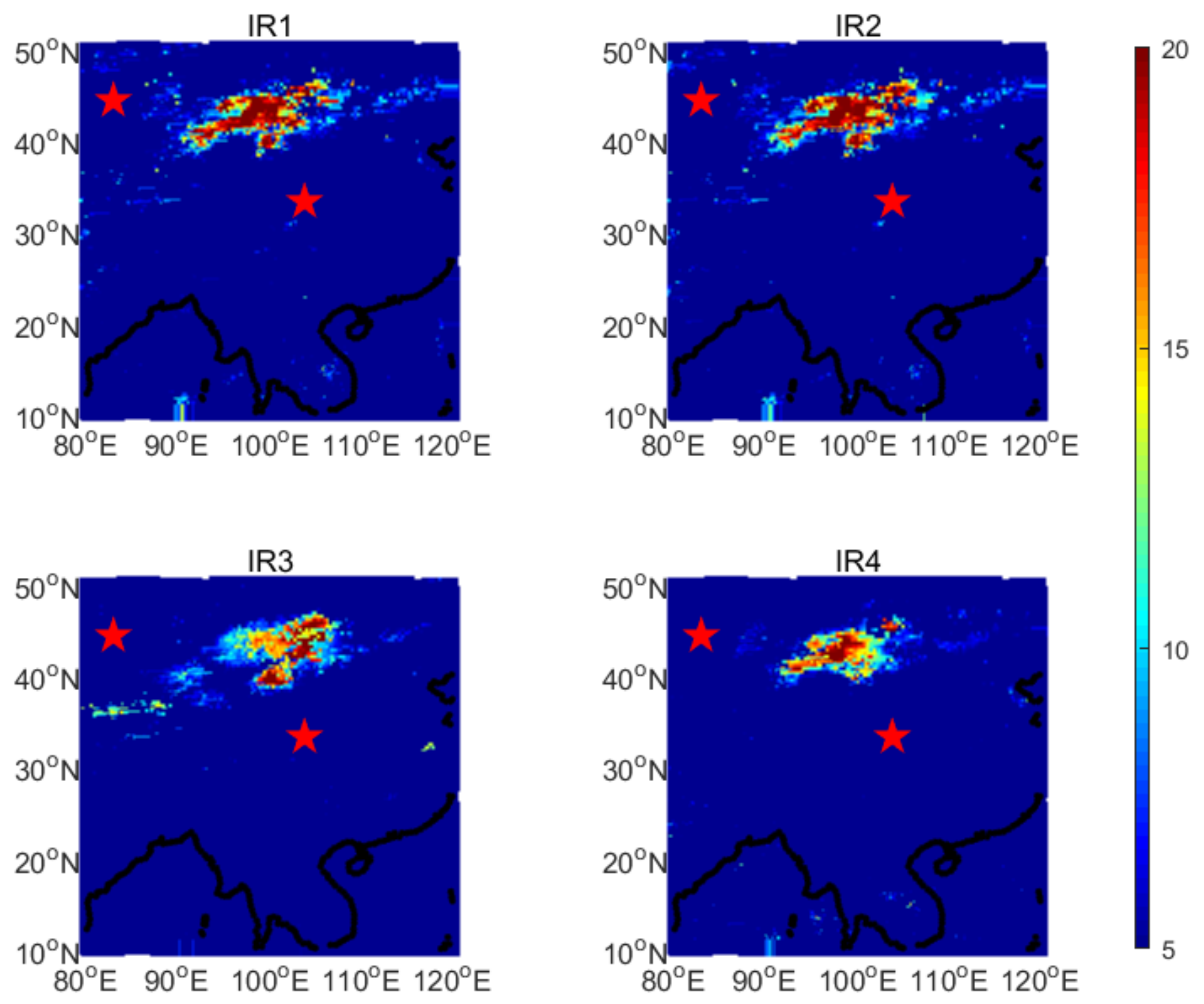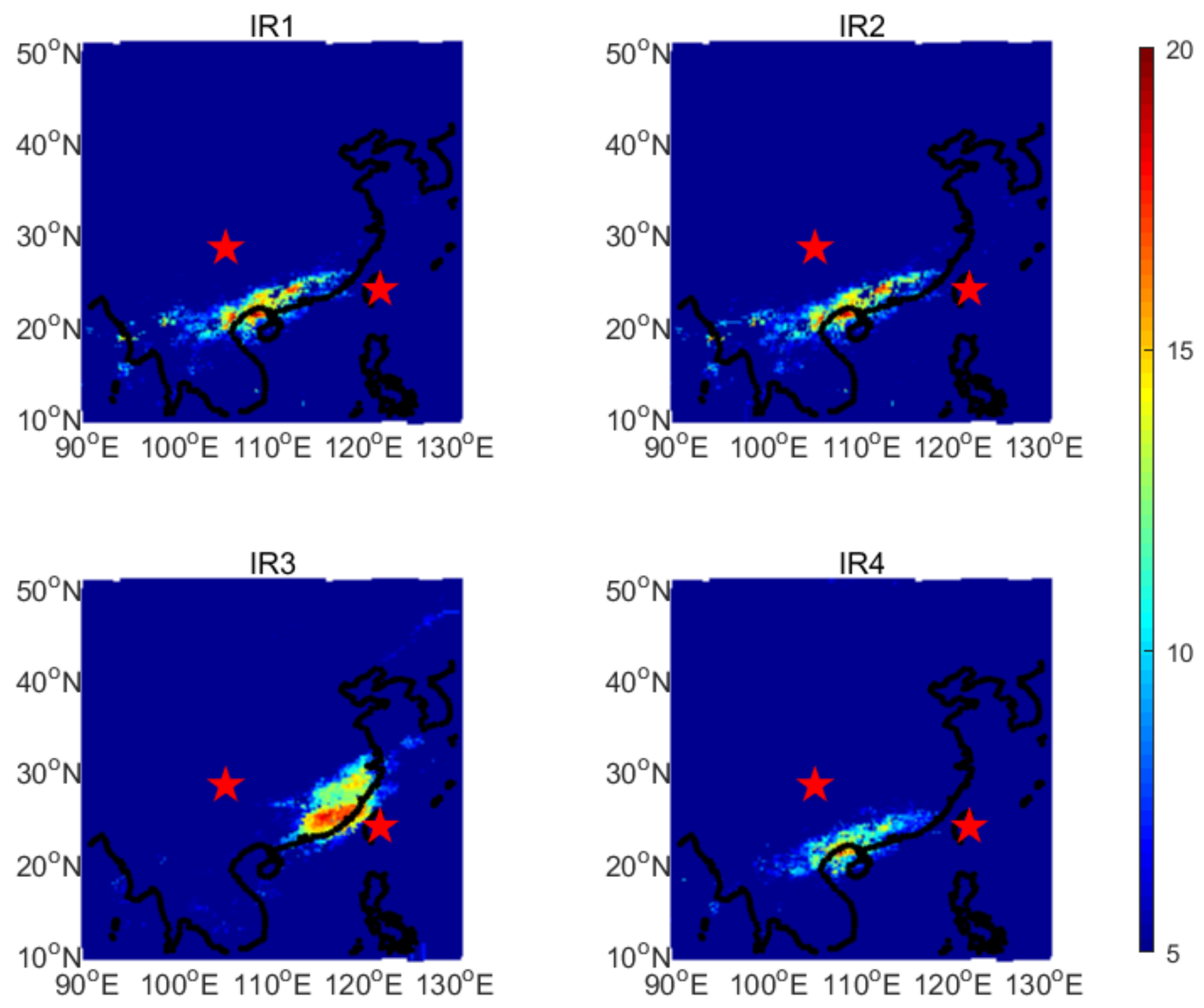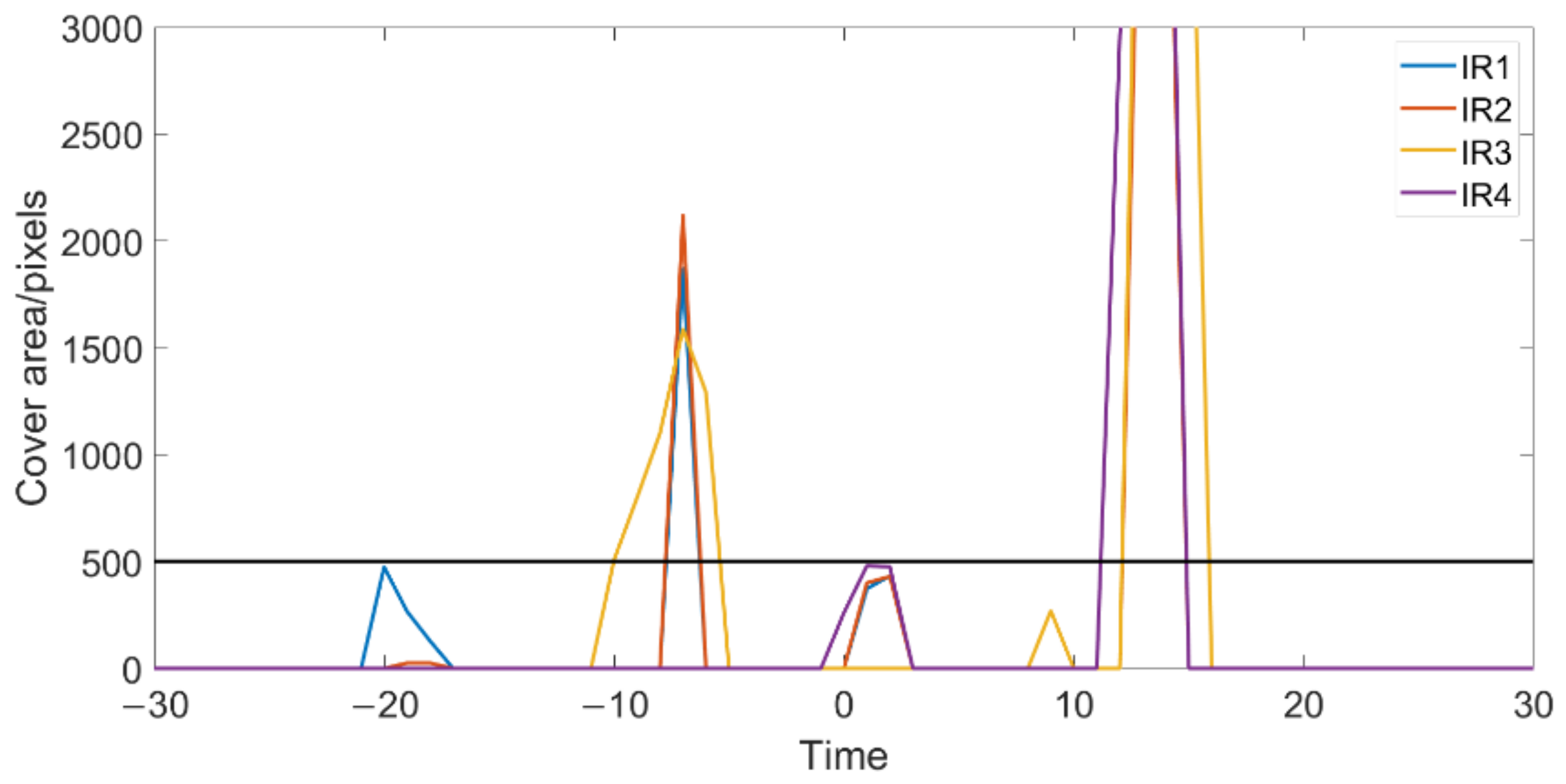1. Introduction
Earthquake prediction is a complex and challenging theme. Since scientists discovered pre-seismic infrared abnormal phenomena in the 1980s [
1], scholars around the world have undertaken various relevant research. Qiang et al. put forward a relatively reasonable theoretical mechanism, which indicates that the main causes of the abnormal temperature increase before the earthquake are gases released from the earth’s crust and the change of the electric field, based on various observations and experiments [
2]. The change of water content in the earth’s surface soils is also able to cause infrared anomalies before earthquakes [
3]. Some experiments proved that the infrared radiation of the rock changes when it is pressed by stress [
4]. Their studies provide theoretical support for the development of earthquake prediction using infrared radiation data.
Infrared remote sensing images have a definite advantage of wide-field and continuous observation over ground-based observation and are widely applied to earthquake prediction [
5,
6,
7,
8]. Most researchers only analyzed single-type data, mainly using long-wave infrared radiation or its products, such as land surface temperature (LST) and outgoing long-wave radiation (OLR) [
9,
10,
11]. In some case studies, the pre-seismic infrared anomaly is discovered from remote sensing images as a common phenomenon [
12,
13,
14]. There are only a few studies about the middle-wave infrared anomalies before earthquakes, whose trend is similar to the anomalies in the long-wave channel [
5,
15]. Other earthquake case studies found that there are abnormal changes in water vapor content in the atmosphere before and after the event [
16,
17]. Most infrared data used to predict earthquakes are from NOAA satellites, Terra/Aqua satellites and Fengyun satellites [
18,
19]. Wei et al. found the infrared anomalies before the Ms8.0 earthquake in Sichuan, China, using single-channel images from the FY-2C satellite [
20]. Ouzounov et al. found the anomalies before several strong earthquakes in Xinjiang, China, using OLR data from NOAA satellites and the FY-2D satellite [
21]. Zhong et al. found the infrared anomaly associated with the 2017 M6.5 Jiuzhaigou earthquake from the data of two Fengyun satellites (FY-2E and FY-2G) [
22].
Researchers have proposed different methods that were successfully used to extract pre-seismic anomalies, such as robust satellite techniques [
23], interquartile, wavelet transform, Kalman filter methods [
24], power spectrum [
25] and some artificial intelligent methods [
26]. Although abundant remote sensing data and advanced information processing technologies are used to predict earthquakes, there has not been any stable and valid algorithm to eliminate the influence of non-seismic factors, such as seasonal changes, weather conditions and human activities [
18]. This is because of the complexity and variability of the earth system and the space environment. As a result, most methods merely work well in a few cases, lacking statistical evidence. Some statistical results in a small region show that there is an infrared anomaly before most earthquakes, but they did not analyze the proportion of the anomalies followed by an earthquake. In a study of 20 earthquakes in the Tibet region, the anomalies of the brightness temperature appeared before 17 earthquakes, and that of long-wave radiation appeared before 16 earthquakes [
27]. The accuracy of earthquake prediction is unable to be estimated without PPV. Some statistical studies show a low positive predictive value (PPV). The statistical results based on the robust satellite techniques indicate the true positive rate (TPR) is high but the PPV of pre-seismic infrared anomalies, which is 25.9% in Sichuan province, is too low to put into practice [
28]. The accuracy of earthquake prediction in the statistics by Jiao and Shan is 6.01% [
29]. The PPV calculated by Filizzola et al. is 7.61% [
23]. This means that most prediction results are wrong. Some studies do not even support the feasibility of earthquake prediction based on infrared remote sensing data [
30]. Although some researchers obtained the PPV of 76.1% and the TPR of 67.1%, the spatiotemporal occupation of anomalies is high at 43.4%, which may cause a large prediction range and excessive public panic [
31].
To explore a more valid algorithm for earthquake prediction using the data of infrared remote sensing, both data and research methods are improved. For one thing, multi-channel infrared images are used in this paper, and the four channels could provide more information about the state of the earth’s surface and atmosphere. For another thing, the statistical method based on connected region recognition is proposed to analyze the correlation between infrared anomalies and earthquakes, which could recognize spatiotemporal characteristics of anomalies in the long-term and wide-region studies. In this paper, the relative power spectrum method is respectively used to extract the anomalies from data of every channel. Both statistical analysis and case study are used to compare the prediction performance of the data from any single channel. Finally, four-channel anomalies are analyzed statistically. The results show that multi-channel anomalies could provide larger PPV and probability gain. It proves the potential of multi-channel infrared data in earthquake prediction and shows that it is possible to identify anomalies associated with earthquakes using multi-dimensional or multi-source data. The statistical method based on connected region recognition could be used to analyze pre-seismic anomalies from most kinds of remote sensing data. It lays the foundation for more data to be used in earthquake prediction.
4. Conclusions
Based on the relative power spectrum method, we propose a statistical method based on connected domain recognition to calculate the PPVs, TPRs and probability gains in different channels. The results show that the PPV and TPR could be improved by increasing the distance threshold. The probability gain is low and its change with distance threshold is not obvious. In addition, we also statistically analyzed the multi-channel infrared anomalies before 358 earthquakes. There is at least one channel anomaly within one kilometer of the epicenter within one month before 36.87% of the earthquakes, but there are only 26 earthquakes with four-channel anomalies within 400 km of the epicenter and 18 earthquakes with four-channel anomalies within 200 km of the epicenter.
In the study of three earthquake cases, four-channel anomalies appeared and disappeared before the earthquake. The epicenter is at or some distance from the edge of the anomaly. Due to the low PPV and probability gain of the earthquake prediction method using single-channel data, multi-channel infrared remote sensing images are used for earthquake prediction. The PPV of four-channel anomalies is 41.94%. This is higher than that of single-channel anomalies at the same distance threshold of 200 km. Meanwhile, the method causes a lower TPR. Significantly, the spatial–temporal occupancy of four-channel anomalies is very low, and the probability gain is doubled.
This study shows the difference between pre-earthquake anomalies in multi-channel infrared remote sensing images and indicates that multi-channel infrared remote sensing images may have more advantages in the PPV and the probability gain of earthquake prediction than single-channel data. In earthquake prediction, the PPV, which indicates the reliability of the algorithm, is more important than the TPR. This is because the accurate prediction of a single earthquake can also save a lot of life and property. However, it is still difficult to use the four-channel infrared data to obtain high enough accuracy for the practical application of earthquake prediction. The purpose of this paper is to show the advantages of multi-channel data over single-channel data. The results could be compared with other types of pre-seismic anomalies to study the mechanism of anomalies during the earthquake preparation period and explore a better method for earthquake prediction.
Earthquake prediction needs a lot of remote sensing data and ground-based observation data. In future studies, we can improve the performance of earthquake prediction with the following aspects:
- a.
FY-2 contains eight satellites. By assimilating data from multiple satellites, it is possible to capture longer observations and count more earthquakes;
- b.
The second generation of Fengyun geostationary meteorological satellites (FY-4) carried the advanced geostationary radiation imager and the geostationary interferometric infrared sounder. The former has 14 infrared channels, while the latter can detect the temperature and humidity of the vertical atmosphere. The data may provide more information for earthquake prediction;
- c.
The new prediction method that combines remote sensing data and surface observation data should be explored.
The anomaly extraction algorithm in this paper can be used for time series analysis of other remote sensing data, and the statistical method can be used for other types of wide-field and long-time spatial–temporal data. Some parameters may need to be adjusted for using other data.

